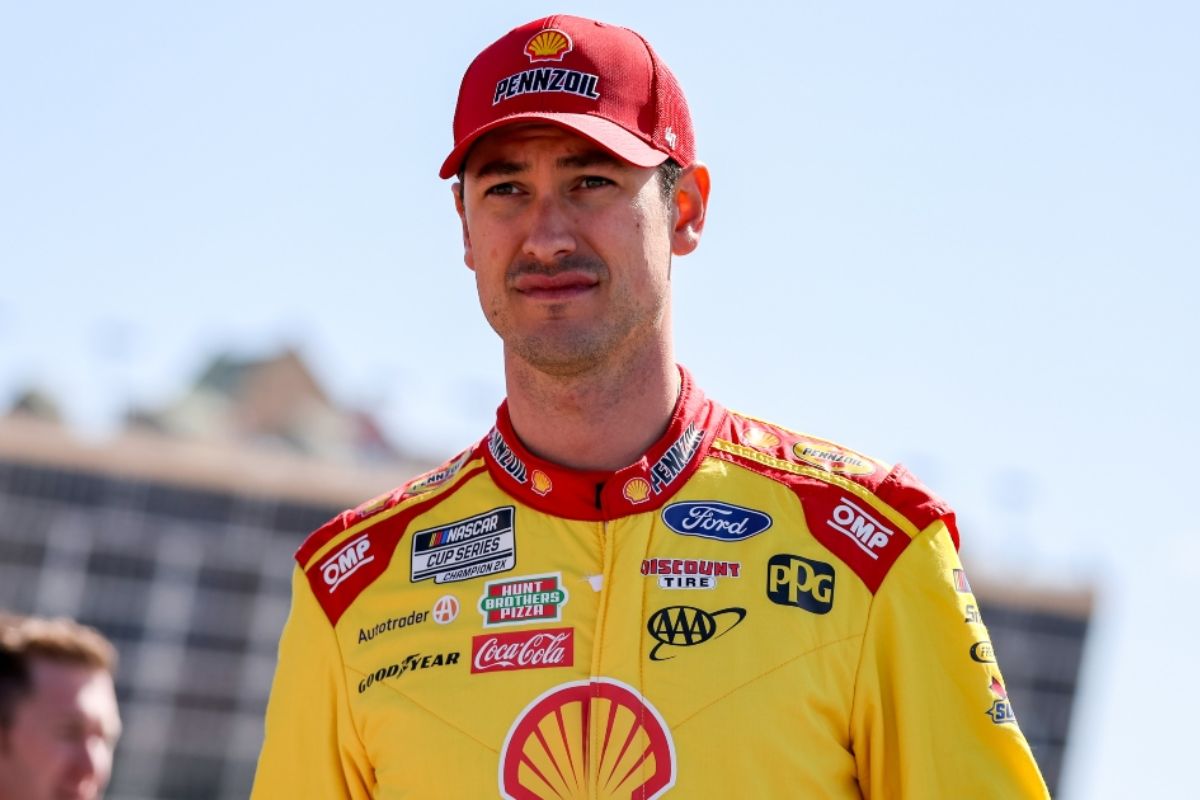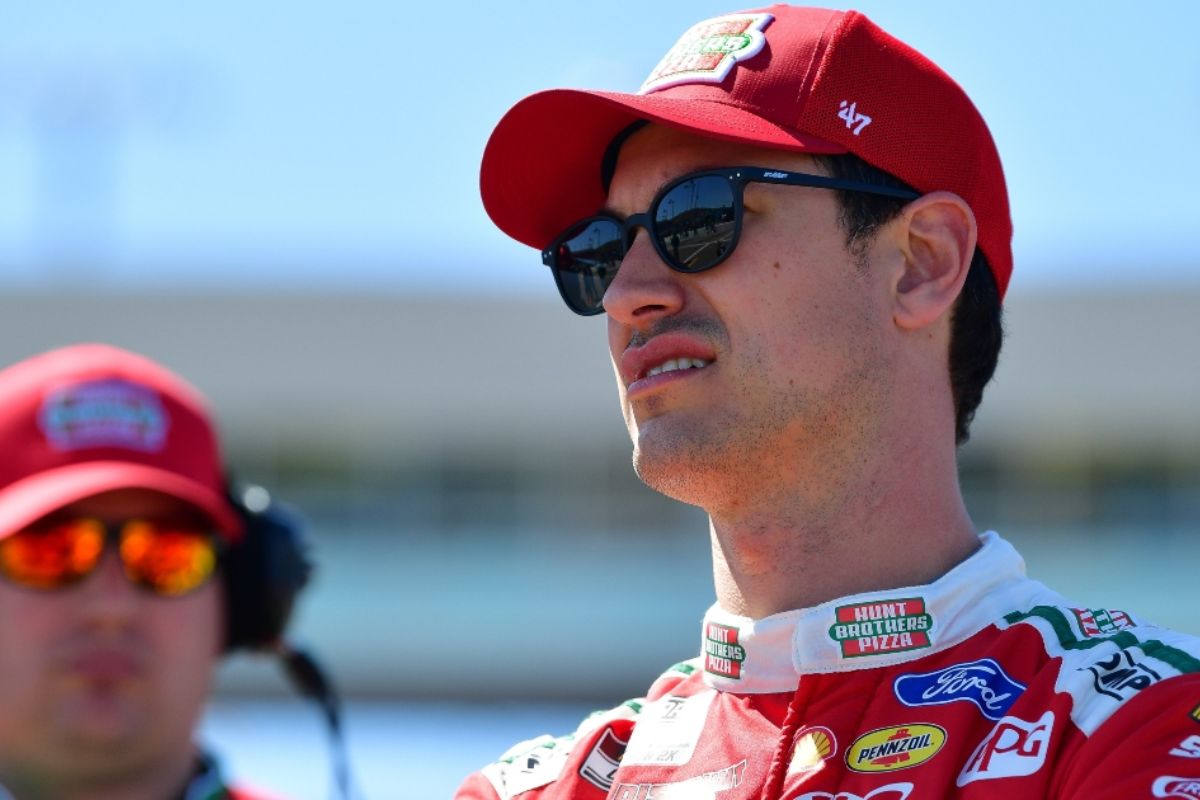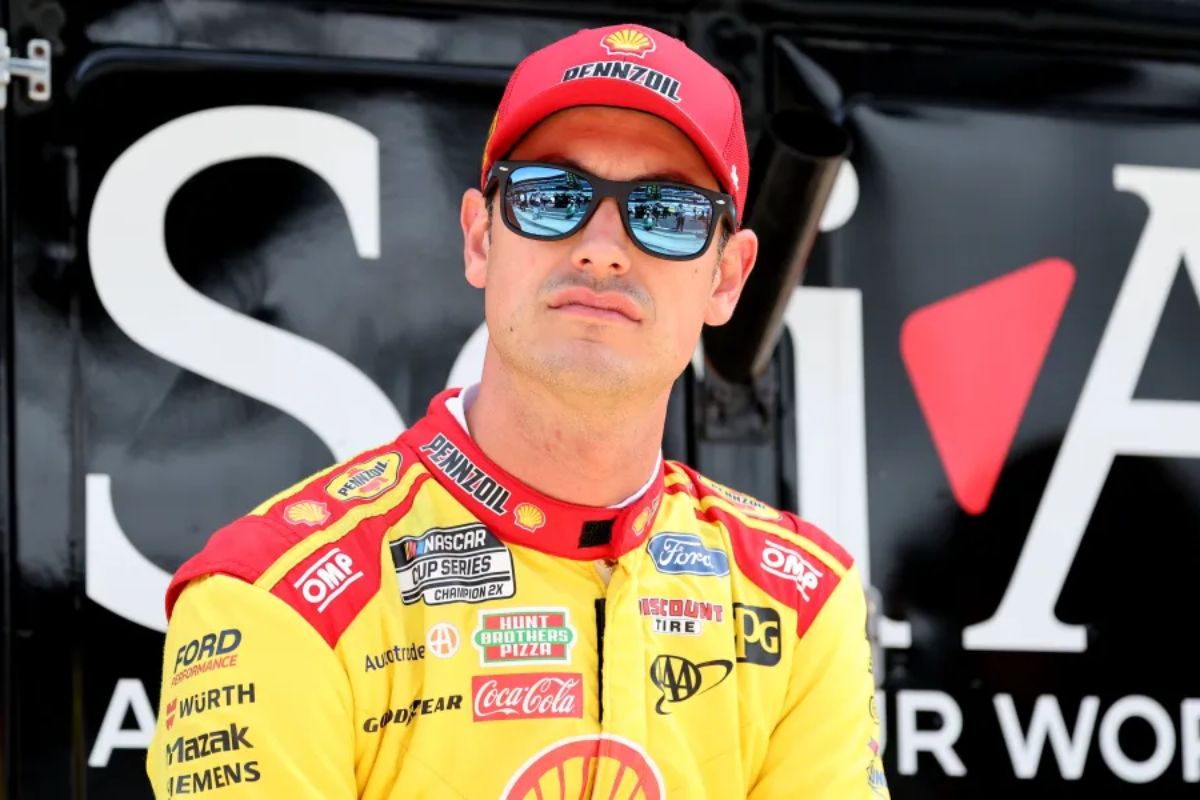Joey Logano Explains Ford’s Early Season Slump: In a recent discussion, Joey Logano illuminated Ford‘s disheartening early season performance, set down their struggles to a blend of mechanical setbacks and the challenges posed by the new Dark Horse model. However, the narrative shifted dramatically as the team harnessed resilience and tactical collaboration, resulting in a remarkable comeback that saw them settle multiple top finishes and secure playoff spots. Yet, the complexities that underpinned this turnaround raise intriguing questions about the balance of technology and teamwork in racing. What specific strategies proved crucial in this transformation, and how might they influence Ford’s path moving forward?
Key Highlights
- Ford’s early season slump was marked by Joey Logano’s three early wrecks and a lack of speed in the No. 22 Ford Mustang.
- The introduction of the new Dark Horse model led to adaptation issues, complicating setup adjustments and limiting practice opportunities.
- Miscommunication and inconsistent feedback across Ford teams hindered development, especially against Chevrolet’s reliable performance.
- A collaborative effort among Ford teams improved data sharing and car setups, contributing to a successful comeback.
- Despite early struggles, Logano’s playoff experience and adaptability fueled confidence for the upcoming races.
Joey Logano’s Challenging Start to the 2024 Season
How did Joey Logano navigate the thunderous beginnings of the 2024 season? The early months proved to be an hard journey for the Team Penske driver, who encountered a series of setbacks that threatened his championship hope.
With three early relics and a noticeable lack of speed in his No. 22 Ford Mustang, Logano found himself struggling with both mechanical shortcomings and the psychological burden of underperformance.
Logano’s first struggles were representative of a broader issue facing many drivers this season, yet his direct reflections on these challenges illuminated the underlying factors at play. He acknowledged that the team’s struggles stemmed from a combination of miscommunication and the need for a more coordinate approach to car setup and race strategy.
Such insights reveal not only Logano’s self-awareness but also his commitment to continuous improvement—a hallmark of elite athletes.
As the season progressed, Logano’s ability to adapt became clear. His persistence paid off with a string of commendable performances, including four top-five finishes and eight top-ten results.
The crowning achievement of this resurgence was a victory at the Nashville Superspeedway, which not only secured him a playoff berth but also give a boost his confidence.
Logano’s passage from a rocky start to a victorious comeback serves as a demonstration of resilience and the importance of collaboration within a racing team.
This narrative sum up the essence of competitive spirit, embodying the dynamic nature of motorsport.
Ford Performance’s Struggles with New Cars
What factors contributed to Ford Performance’s difficulties in the early stages of the 2024 NASCAR season? The introduction of the new Dark Horse model was met with considerable anticipation, yet the shift proved to be filled with challenges. While both Ford and Toyota aimed to disrupt Chevrolet’s dominance, it became evident that the new technology did not equate to immediate success on the track. Ford teams struggled to adapt, while their Chevrolet counterparts thrived, leveraging established systems that provided a competitive edge.
The following table outlines key aspects of Ford Performance’s early struggles with the new car:
| Aspect | Impact |
|---|---|
| Adaptation to New Tech | Slowed performance and consistency |
| Comparison to Chevy | Chevrolet’s advantage in reliability and familiarity |
| Team Coordination | Inconsistent results across different teams |
| Driver Feedback | Mixed responses, hindering development focus |
This scenario highlights the inherent risks associated with introducing new technology in a highly competitive environment. Unlike Chevrolet, which capitalized on a proven foundation, Ford’s ambitious leap into innovation necessitated time and fine-tuning. Ultimately, these struggles emphasized the importance of a cohesive strategy in the face of groundbreaking changes. As the season progressed, adjustments became imperative for Ford to regain its competitive stature in the NASCAR landscape. The early season slump served as a vital learning phase that could catalyze future success.
🧠 "The learning process is slower now than ever."@joeylogano speaks on the slow start that he, @Team_Penske and @FordPerformance got off to in 2024 and how the lack of practice and testing has changed the game. pic.twitter.com/qhWcCnOWON
— SiriusXM NASCAR Radio (Ch. 90) (@SiriusXMNASCAR) September 4, 2024
Joey Logano Discusses the Challenges of Adapting to New Technology
Adapting to new technology in NASCAR can often feel like steering through uncharted waters, a sentiment echoed by Joey Logano as he reflects on the challenges faced during the early part of the 2024 season. Logano articulated the complexities arising from the introduction of a new car, emphasizing the disparity between theoretical data and real-world performance.
“It’s pretty wild to think that we had that rough of a start and I think some of that was, you know, let’s face it, was a new car, we had a lot to learn. There’s a lot of data that was shown one way but maybe acted a different way on the racetrack right? We all know in the real world, a lot of times is different from what happens in the sim world or CFD world or wind tunnel world.”-(LOGANO)
“I think, as you kind of understand that and honestly the learning process is slower now than ever because you don’t get practice. You don’t get to go testing. You don’t get to do all these things to actually figure out what works on your race car on the racetrack. Cause you just don’t get the opportunity. Even when we have 15-20 minutes of practice, you don’t get to go slinging springs out of it. You don’t get to put data on the car. You don’t really get this opportunity to learn.”-(logano)
With teams restricted to minimal track time, the capacity to experiment with setup adjustments—like swapping springs or fine-tuning other components—is severely curtailed. This lack of hands-on time translates into a steeper learning curve, as drivers and teams must rely on scant data and simulations that may not accurately predict real-world dynamics.
Logano’s insights emphasize a critical aspect of modern NASCAR: the need for teams to swiftly adapt to evolving technology while grappling with a competitive landscape that demands precision and innovation.
The intersection of data and practical application remains a delicate balance, one that requires continual refinement and a willingness to learn through trial and error in a sport defined by speed and performance.
The Turning Point for Ford and Toyota
The early struggles faced by Ford and Toyota in the 2024 NASCAR season highlighted the challenges of integrating new technology while competing against a well-established Chevrolet lineup. Chevrolet’s ability to utilize extensive data from their older Camaro ZL1 allowed them to secure victories in the opening races, setting a high bar for their competitors. In contrast, Ford and Toyota’s introduction of new vehicles left them at a disadvantage, as they grappled with performance inconsistencies exacerbated by a lack of essential data.
However, the narrative began to shift as the season progressed. Ford and Toyota’s persistent adaptation, driven by accumulated data, laid the groundwork for their resurgence. This significant moment not only enabled them to close the performance gap with Chevrolet but also to assert dominance on the track in the latter part of the season. The transformation was clear in the last three regular-season races, where their newfound competitiveness translated into tangible success.
| Manufacturer | Wins in Last 3 Races | Total Playoff Cars |
|---|---|---|
| Ford | 2 | 6 |
| Toyota | 1 | 5 |
| Chevrolet | 0 | 4 |
With Ford Performance securing the most playoff spots among manufacturers, the stage is set for an electrifying playoff showdown, demonstrating that the early season slump has paved the way for a formidable comeback.
Joey Logano’s Confidence Heading into the Playoffs
As the playoffs approach, Joey Logano exudes a visible confidence that comes from both his extensive experience and the resilience of his Team Penske crew. Despite being reseeded in ninth and facing a season that has not been defined by dominance—with only one win and two stage victories—Logano remains optimistic about capturing a third championship. His belief is rooted in the collective experience of his crew, a factor he emphasizes as a key strength.
“We have a lot of experience on this team, I think that’s probably the biggest [strength]. We’ve all been there, done that at this point. We’re a pretty old team. There’s nothing wrong with that; I think that’s a good thing when you can go into the playoffs because for a lot of these guys, it’s some of their first, second, or third time in the playoffs, and maybe some of them haven’t gone very far. So, we’ve been there and done that, and I feel confident we can run hard and get something out of it.”-(logano)
Logano’s perspective is shaped by the understanding that many competitors are maneuvering through the playoffs for the initial time, while he and his team have been there before.This seasoned approach is critical as they head into the final ten races, where stress mounts exponentially.
At 34, Joey Logano is determined to bounce back from the frustration of last year’s Round of 16 elimination, while also aiming to end Team Penske’s current winless streak. His motivation is stronger than ever as he looks to redeem both himself and his team.. His enthusiasm is real; he is confident in the playoffs, conveying that his happiness stems from the resolution of the regular season.
“I love it. I love it. That’s why I said I’m happy the regular season is over.”-(logano)
This mindset, mixed with past playoff experience—having reached the title race five times—positions him well to maneuver through the challenges ahead.
News in Brief: Joey Logano Explains Ford’s Early Season Slump
The early season difficulties faced by Ford Performance emphasize the complexities inherent in adapting to new technology and models within competitive motorsport. However, the subsequent comeback, characterized by planned collaboration and data sharing, highlights gives both the team and its drivers. This transformation not only build up Ford’s competitive standing but also set the stage for a promising playoff run, illustrating the dynamic nature of performance in the face of adversity.
ALSO READ: Joey Logano’s Identity Mix-Up Sparks Outrage as NASCAR’s Mistake Takes Center Stage



